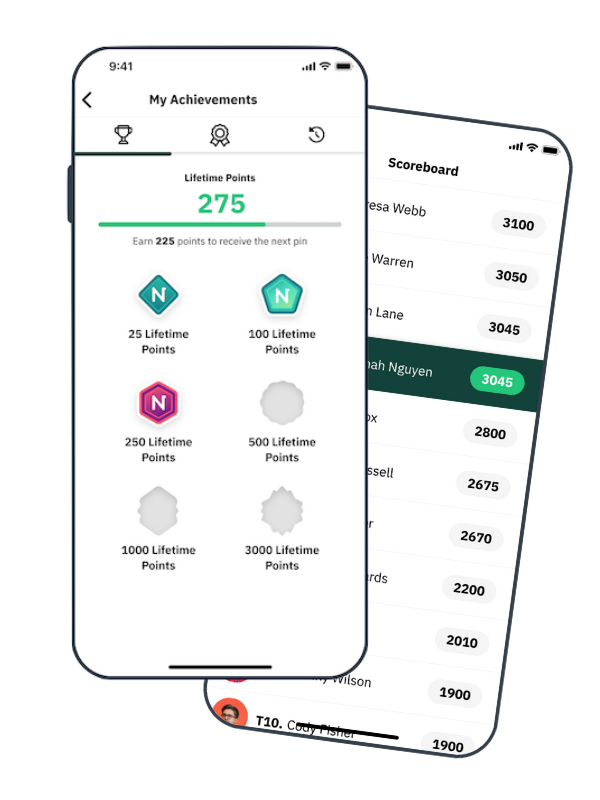
7 signs you have internal communication problems
This is an excerpt from our Ultimate Guide to Deskless Employee Communication. Download the free 40+ page guide for more information on identifying communication problems, and building out an effective strategy.
Whether or not you have a formal internal communication strategy in place, the way you share information with your employees can have a huge impact on your bottom line – for better or for worse. And, unfortunately, communication problems are all too common.
We can hear you now: oh we don’t have a problem with our internal communication! We share plenty of memos! Our managers share every email we send! We have posters up at every location!
Here’s the thing: internal communication is about quality, not quantity. It’s about choosing the right communication channels, sharing the right info at the right time, and creating organic opportunities for feedback and idea sharing. With that in mind, there’s a solid chance you might be dealing with some broken communication, and not even know it.
Don’t believe us? See how many of these symptoms your organization is showing.
Here are seven signs you have internal communication problems:
1. Your employees are disengaged (or quitting)
Morale has taken a hit. Productivity has come to a standstill. You’re hemorrhaging money from an employee turnover rate that’s even higher than usual. You’re thinking it’s just the market, or maybe your managers are to blame. But the problem is likely a bit more rooted in your workforce’s basic needs.
What it’s a sign of: Your employees don’t have a sense of the company’s direction and larger purpose, and that leads to disengagement and low morale – which, over time, leads to turnover. Long past are the days when organizations believed that if they paid their employees enough, they’d get hard-working happy employees that were willing to put up with anything.
Now, employees are looking for so much more than just a paycheck. They’re looking for a greater purpose, a way to contribute to a larger goal…in short, they’re looking for information. Fast Company put it best in a recent article by branding guru MaryLee Sachs: “Increasingly, employees are more interested in a clear alignment and understanding of a company’s culture and values than they are in benefits like flexible working, training, access to tech, and even bigger paychecks.”
2. No one knows anything
You’re mobilizing on a nationwide promotion, but you’ve just discovered that half your locations have no idea what they’re supposed to be telling customers. Or you find out that 75% of your front desk staff aren’t even mentioning your loyalty program. Or a client informs you that your team isn’t following the new sustainable cleaning techniques you shared last week. You get the idea – you have info that needs to be shared, and it’s not getting to the right people.
What it’s a sign of: This can be a sign of two things. First, it can be a sign that info isn’t successfully making its way all the way down from head office to every single employee. The barrier could be a bottleneck, like an overworked manager that doesn’t have time to share each email the organization shares, or it could be a problem with the communication channels.
This can also be a sign that employees are getting your communications, but not reading them. Why? They’re too long, too confusing, sent too often or at the wrong time – or sent to the wrong place (more on that later).
3. Everything is top-down
What does your internal communication look like? Maybe a monthly update sent to all stores? A weekly overview of new promotions taking place? Maybe communication stops at the frontline manager? Maybe, if you’re really keen, quarterly performance reviews?
…See anything missing from this picture?
What it’s a sign of: Your internal communication strategy lacks an upward feedback component. And that’s a communication problem. Upward feedback is closely linked to performance; one Salesforce report found that employees that feel heard were 4.6 times more likely to feel empowered to perform their best work. But also a lack of upward feedback means you’re missing out on great ideas from your frontline workers. Without any kind of forum or feedback among your communication channels, you’ve got a serious gap in your internal communication strategy.
4. Customers or guests are complaining (or worse – leaving)
If we’ve said it once, we’ve said it a thousand times: better customer experience starts with better employee experience. So it’s no surprise that a problem with your customer or guest experience should set off alarm bells.
What it’s a sign of: If your customers or guests aren’t happy, it means there’s a problem with your CX. And most often, that problem lies in your employees not having access to the information they need to create an amazing experience.
As organizations explore the relationship between their in-person and online experiences, this becomes more important than ever. Your customers are coming in-store armed with more information than ever before. Because of that, your employees need to be educated with more information, otherwise there’s a disconnect, and a broken experience.
5. Your internal communications can only be read…when they’re not at work
Your latest internal communication goes out at 9 a.m. Maybe it goes up on your intranet site. Maybe you have a list of emails for every worker in your organization (here’s hoping it’s up to date! 🤞) and you send it out. Here’s the thing: your employees aren’t going to see it right away. In fact, they’re likely not even going to see it when they’re at work. If at all, they’ll likely read it once they’re finished their shift, and are much less likely to engage in any intel you’re sharing.
What it’s a sign of: Your communication channels aren’t relevant to the deskless workforce. Organizations often make the mistake of using the same communication channels they use for their corporate or desked employees – but deskless and frontline workers need a very different approach.
After all, what if you need to tweak a merchandising plan? Or adapt on the fly to changing safety precautions? Now more than ever, being able to share info in real time with your frontline employees is a must-have, not a nice-to-have. Our recommendation is to send communications where they already are: their phones. Worried that a bring-your-own-device policy will distract employees rather than engage? Our BYOD primer found that it actually boosted performance: organizations using associate-facing mobile solutions saw customer satisfaction increase by a whopping 58%.
6. Your most crucial info is in different places
Quick: what’s your SOP for disinfecting high-traffic areas? Where are the new opening guidelines? Where do you keep your brand values? Information shouldn’t be a treasure hunt. If you had various answers for where all these pieces of information are, you’ve got a communication problem.
What it’s a sign of: Your employees aren’t empowered to use information quickly and efficiently to react and adapt to changing situations. After all, if your workers can’t find crucial information as soon as they need it, they don’t have the tools they need to do their jobs.
This can also be a major communication challenge as hiring starts to ramp up and your teams are onboarding many new employees – without all your information in one place, onboarding becomes time-consuming for your teams, and overwhelming for the new hires.
And finally, a lack of central information also means employees are less likely to follow standard procedures and tasks lists when going through their day. Without a central hub of information outlining how each process should be completed, your teams are all going rogue with their own version of the process. That can lead to inefficiencies – and safety concerns.
7. There’s no way for your teams to talk
Picture this: one of your midwest locations comes up with a fantastic way to boost loyalty program sign-ups. Or a team switches up the upsell display at cash and sees a 10% boost in sales. These are fantastic ideas that other teams could try – if they knew about them.
What it’s a sign of: This is a symptom of several serious issues. First, you’re missing out on great ideas and best practice-sharing coming from your teams. Or if your teams are finding ad hoc ways to share ideas (like sharing on social media or simply texting), you’re missing out on a way to scale the best ideas at an organizational level, because the communication is happening where you can’t see it.
But idea sharing aside, there’s another issue here: without a way for your teams across the organization to connect, there’s a lack of employee community that could have huge impacts on morale and engagement.
—
One final thought: if you’re reading through this list, and your first thought is hmm…I have no idea if we are showing these symptoms! That’s a warning sign too. Without a proper communications platform in place, it’s all the more difficult for head office to identify these problems in the first place. The first step in fixing your internal communication strategy is to start noticing the issues your teams are dealing with – from there, you can start to address them (hopefully with Nudge’s help! 😉 ).





